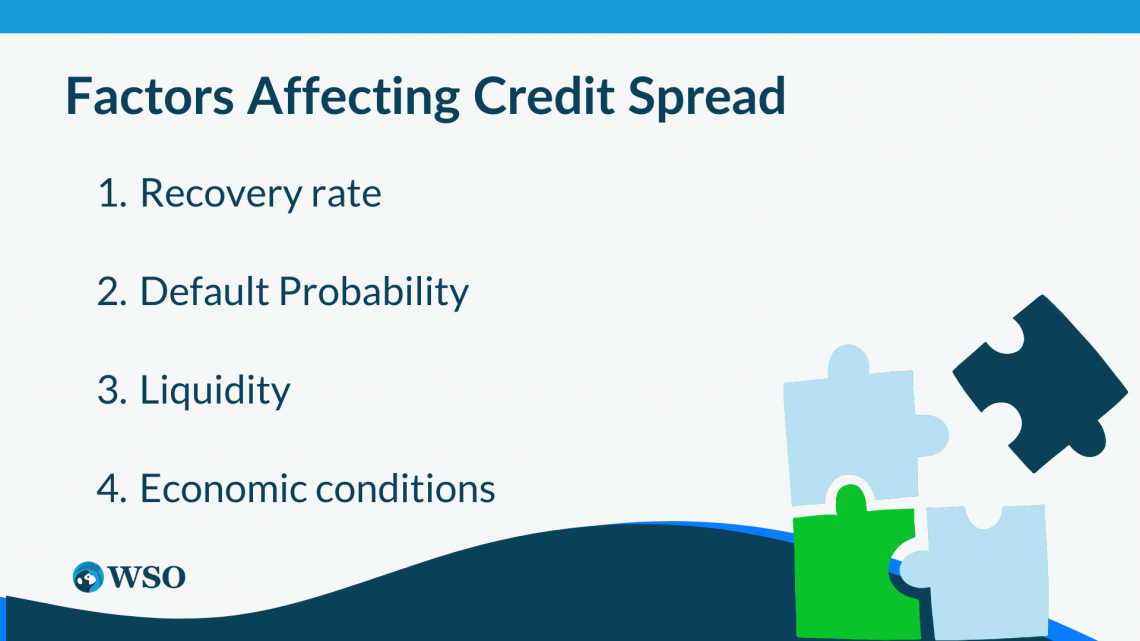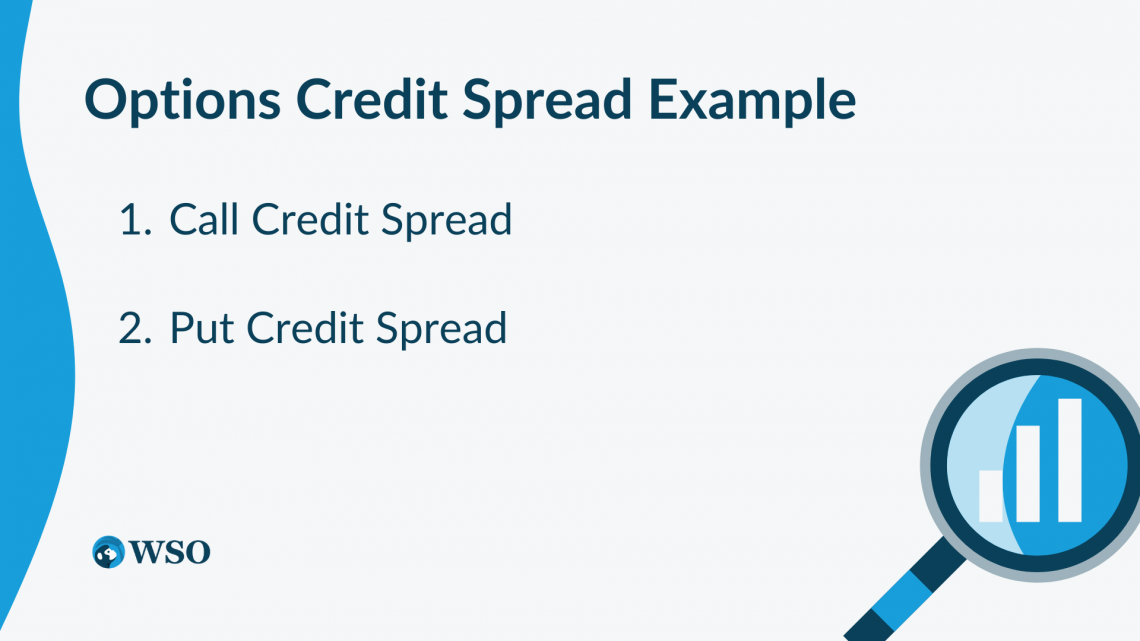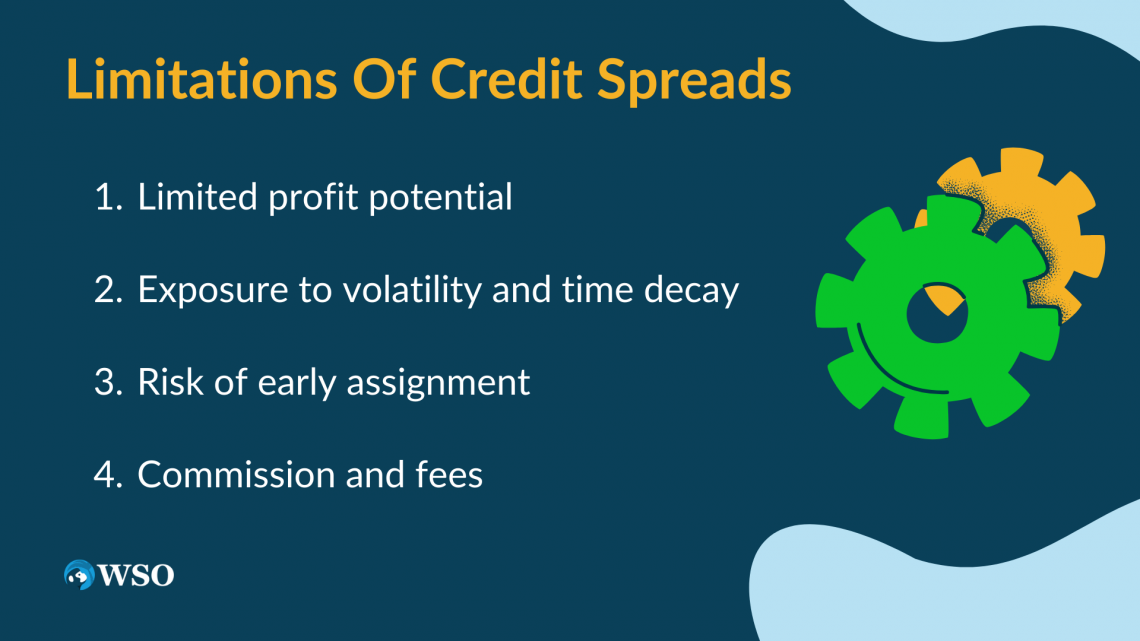Credit Spread
Credit spread measures the yield difference between two bonds of the same maturity but of different credit quality, reflecting the relative risk and return of different bonds.
What is Credit Spread?
Credit spread has two meanings depending on whether we are talking about bonds or options. For bonds, credit spread measures the yield difference between two bonds of the same maturity but of different credit quality. Consider a 10-year government bond that yields 1.5%.

If a 10-year corporate bond yields 3.5%, the credit spread is 2% because the two interest rates differ by that amount. It reflects the additional risk that investors demand holding a lower-rated bond than a higher-rated one.
These spreads are usually measured in basis points. Each basis point is equal to 0.01%. Therefore, a spread of 2% is equivalent to 200 basis points. These rates can vary over time.
It can change according to economic conditions, market liquidity, and investor sentiment. Generally, these spreads widen (increase) when the economy is weak or uncertain. Meanwhile, it narrows (decreases) when the economy is strong or stable.

They are valuable indicators of the relative riskiness and attractiveness of different bonds. Investors can use these spreads to compare bonds with different ratings and maturities and to assess the market's perception of credit risk.
These spreads can also help investors identify potential opportunities for buying or selling bonds based on their expected changes in yield.
Key Takeaways
- Credit spread measures the yield difference between two bonds of the same maturity but of different credit quality, reflecting different bonds' relative risk and return.
- Credit spread can also be a type of options strategy that involves selling a high-premium option and buying a low-premium option on the same underlying asset with the same expiration date but different strike prices, providing a net credit and limited profit potential.
- These spreads are calculated by subtracting the risk-free yield rate from the rate in question.
- The spread can be determined by the default risk, recovery rate, default probability, liquidity, and economic conditions.
- The same term is used in options to describe an options strategy that involves buying and selling an options contract with the same expiration date but different strike prices.
Credit Spread As An Option Strategy
A credit spread for options is a type of options strategy. It involves selling a high-premium option and buying a low-premium option on the same underlying asset with the same expiration date but different strike prices.

The net credit is the difference between the premiums paid and received, which is the maximum profit the trader can make from the strategy.
This type of options strategy is usually implemented when the trader expects that the underlying will remain within a certain range until the expiration date. The trader hopes both options will expire worthless or out of the money, allowing them to keep the net credit as profit.
However, if the underlying price moves significantly beyond the strike price of either option, the trader may incur a loss that could exceed the net credit.
Depending on whether the trader is bullish or bearish on the underlying asset and whether they are utilizing call or put options, there are various sorts of spread options strategies. Typical illustrations include:

- Bull put spread: This is a bullish strategy where the trader sells a put option with a higher strike price and buys a put option with a lower strike price.
- Bear call spread: This is a bearish strategy in which the trader sells a call option with a lower strike price and buys a call option with a higher strike price.
- Iron condor: A neutral strategy involves selling a call option and a put option with higher strike prices and buying a call option and a put option with lower strike prices.
Credit spread options strategies have limited profit potential and risk exposure compared to other strategies. They are suitable for traders with a moderate view of the direction and volatility of the underlying asset.
Formula For Credit Spread
Credit spread is a measure of additional risk. It refers to the increased default risk investors take when investing in a corporate bond instead of a risk-free government bond.
The basic formula is:
Credit Spread = Corporate Bond Yield - Government Bond Yield
For example, consider a 10-year corporate bond issued by Tesla. It yields 5.3% per year. Compare this to a 10-year government bond issued by the United States yielding 1.8%. The spread for Tesla bond is:
3.5% = 5.3% - 1.8% = 350 basis points
This means that investors demand a 3.5% higher yield to invest in Tesla bonds than in a U.S. Treasury bond of the same maturity. The higher the spread, the higher the investor's perceived risk of default by the corporate issuer.
However, it is not only determined by the issuer's default risk. It also depends on other elements, such as:

1. Recovery rate
This refers to the percentage of the principal amount investors can expect to recover if the issuer defaults on the bond. The lower the recovery rate, the higher the spread.
2. Default Probability
This refers to the likelihood that the issuer will not make timely interest and principal payments on the bond. The higher the default probability, the higher the spread.
3. Liquidity
This refers to the ease with which investors can engage in transactions of bonds in the market. The lower the liquidity, the higher the spread.
4. Economic conditions
This refers to the state of the overall economy and market sentiment. Investors prefer safer assets in times of recession, uncertainty, or crisis. They prefer government bonds over riskier assets like corporate bonds for increased security.
The demand for government bonds increases, and the yield decreases. Meanwhile, it decreases the demand for corporate bonds and raises their yield.
As a result, credit spreads tend to widen in dire economic conditions. In good economic conditions, these spreads typically narrow.
Note
It is an essential indicator of the credit quality of individual bonds. However, it can also signal the health of the entire bond market.
By understanding how to calculate it and what factors affect it, investors can make better-informed decisions about their bond portfolio allocation and risk management.
Credit Spread in Options
It is a strategy in which two options of the same type are bought and sold at separate strike prices but with the same expiration date. To receive a net credit is the aim.

This term refers to the difference between the premiums collected. The two premiums occur from selling the higher-priced option and buying the lower-priced option.
This type of spread can be either bullish or bearish. This depends on whether the trader thinks the underlying asset's price will climb or fall. A bullish one entails buying another OTM call option. It also includes selling one that is out of the money.
A bear call spread or call credit are other names for this. An OTM put option is sold, and another OTM put option is purchased in a bearish credit spread. This is sometimes referred to as a bull put spread or a put credit spread.
Note
Sellers of a call and sellers of a put earn a premium for the risk they undertake.
This spread's maximum profit equals the net credit received when the trade was opened. The difference between the strike prices less the net credit obtained is the maximum loss.
The breakeven point equals the strike price of the sold option plus or minus the net credit received, depending on whether it is a call or put spread.
This spread type can generate income from a neutral or slightly directional view of an underlying asset. It can also hedge against the risk of a negative price movement in an existing position.
However, a spread also has disadvantages, such as limited profit potential, high commission costs, and exposure to early assignment risk.
Options Credit Spread Example
The difference between the premiums is the net credit received when entering the trade.

These spreads can be bullish or bearish, depending on whether they are constructed with calls or puts. A call credit spread is a bearish strategy that profits when the underlying security falls in price or stays below a certain level.
A put credit spread is a bullish strategy that profits when the underlying security rises in price or stays above a certain level. Let's look at some examples of each type of spread.
Call Credit Spread
Suppose XYZ stock is trading at $50 per share. A trader expects the stock to stay within $45 to $55 until expiration.
He sells a $55 call option for $2 and buys a $60 call option for $1, creating this type of spread.
He receives a net credit of $1 per share or $100 for 100 shares. His maximum profit is $100, which he will keep if XYZ stays below $55 at expiration. His maximum loss is $400, which he will incur if XYZ rises above $60 at expiration.
His breakeven point is $56, the strike price of the sold call plus the net credit received.
Put Credit Spread
Suppose ABC stock is trading at $40 per share. A trader expects the stock to rise slightly in the near term. He sells a $35 put option for $1.5 and buys a $30 put option for $0.5, creating this type of spread. He receives a net credit of $1 per share or $100 for 100 shares.
His maximum profit is $100, which he will keep if ABC stays above $35 at expiration. His maximum loss is $400, which he will incur if ABC falls below $30 at expiration.
His breakeven point is $34, the strike price of the put option sold minus the net credit received.
Limitations Of Credit Spreads
They have some limitations that traders should be aware of before using them. Here are some of the main drawbacks:

1. Limited profit potential
The maximum profit the trader can achieve with this type of spread is the net premium received when opening the trade. This means that even if the underlying asset moves significantly in the favorable direction, the trader cannot make more than the initial credit.
This limits their reward-to-risk ratio compared to other strategies with unlimited profit potential.
2. Exposure to volatility and time decay
They are affected by changes in implied volatility and time decay of the options.
Note
Implied volatility measures the extent to which the market expects an asset's price to fluctuate in the future.
When implied volatility increases, the prices of both options in this spread increase, which reduces the net premium and lowers the profit potential. When implied volatility decreases, the opposite happens.
Time decay is an option's value that decreases as its expiration date draws near. These spreads benefit from time decay, which raises the net premium while decreasing the value of both options.
However, time decay also increases the risk of being assigned the short option before expiration, which can result in unwanted losses or margin requirements.
3. Risk of early assignment
These spreads involve selling an option that is closer to the money than the option that is bought. This means there is a risk of being assigned to the short option before expiration if it becomes in the money or at the money.
Note
Early assignment can happen before expiration, but it is more likely when there is a dividend payment, high implied volatility, or low liquidity in the options market.
When early assignment occurs, the trader has to either buy back the short option at a higher price or deliver or receive shares of the underlying asset at the strike price. This can result in additional costs, risks, or margin requirements that can affect the profitability of the trade.
4. Commission and fees
These spreads involve opening and closing two options contracts for each trade. This means that traders have to pay commissions and fees for both legs of the trade, which can reduce the net premium and lower the profit potential.
Commission and fees vary depending on the broker and platform used, but they can significantly impact the performance of these spreads, especially for small trades or frequent traders.
They are a popular and versatile options strategy that can generate income and hedge risk in different market conditions. However, they also have some limitations that traders should know before using.
Note
By understanding these limitations, traders can make better decisions and improve their chances of success with these spreads.
Summary
The word "credit spread" has two distinct meanings. The yield differential between two bonds with the same maturity but differing credit grades is one example of a meaning.

The credit spread reflects the riskiness of the corporate bond compared to the Treasury bond, which is considered risk-free. Broader spreads signify greater risk. This information can help you make informed decisions when investing in corporate bonds.
You can tailor your investments to match your risk tolerance by choosing an appropriate balance of risk and reward.
The second definition of credit spread is an options strategy that involves purchasing and selling options on the same underlying asset with various strike prices and/or expiration dates.
This tactic seeks to obtain a net credit, or the difference between premiums paid and received. Bullish or bearish credit spreads are also possible.
Note
A credit spread can be used as a hedge against volatility or price changes.
Choosing this type of spread can help you earn high profits from options while mitigating risk by limiting your losses.
Understanding this term can be crucial to mitigating risk in your portfolio. Whether this comes into play regarding corporate bonds or options strategies, it can help you make better investment decisions to preserve your wealth.
Researched and authored by Haimeng Yang | LinkedIn
Free Resources
To continue learning and advancing your career, check out these additional helpful WSO resources:




or Want to Sign up with your social account?